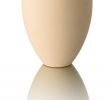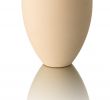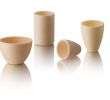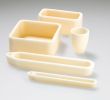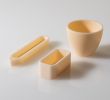Alumina crucibles and pods
A crucible is a container used for high temperature manipulations. The choice of the quality of the material used is very important in order to avoid interactions, reactions or contaminations with the molten product. Alumina (or aluminum oxide) is chemically inert to most of the products to be melted. Different types of alumina crucibles are useful in many fields of application, such as the glass industry, metallurgy, research and development.
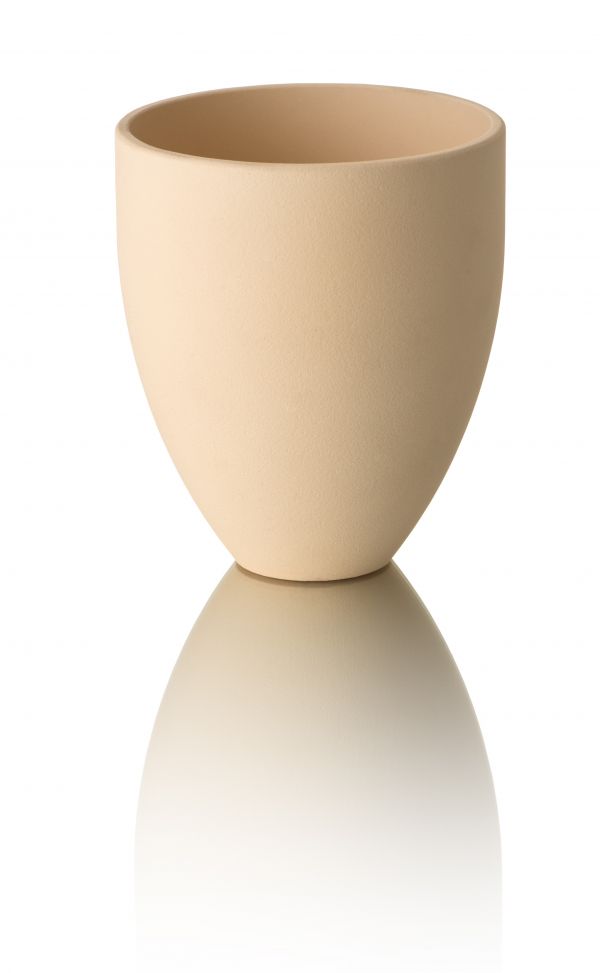
Why choose alumina crucibles?
Due to its use, a crucible must be able to withstand particularly high temperatures. Indeed, it is used to contain extremely hot materials that are to be melted, calcined or analyzed. This is why a refractory and inert material such as alumina is necessary.
Aluminum oxide is a technical ceramic with many thermal properties, making it the material of choice for high temperature applications. In its form of Kyocera DEGUSSIT AL23 (99.7% pure), alumina is resistant to thermal shock and can withstand temperatures up to 1950 °C. It also has very good dimensional stability, even at high temperatures, allowing the crucible not to deform under the action of heat. Alumina also offers excellent corrosion and wear resistance. These exceptional properties make it a high performance ceramic, ideal for crucibles.
The different types and ranges of crucibles
The alumina ceramic crucibles offered within the product range are of various shapes and sizes. They are made of Kyocera DEGUSSIT AL23 pure alumina, DEGUSSIT AL24 pure alumina, DEGUSSIT AL25 pure alumina, Kyocera DEGUSSIT FZY zirconia and DEGUSSIT ZR25 porous zirconia or Kyocera DEGUSSIT Y23 yttrium oxide.
The flat-bottomed cylindrical crucibles have a diameter that varies between about ten and one hundred mm. Their height is generally between 15 mm and 150 mm. There are two types of conical crucibles:
- The conical high form: the diameter of their lower part varies between ten and thirty mm, while that of the upper part can make between ten and a hundred mm. Their height can reach 120 mm.
- The low conicals: the diameter of their upper part is comparable to that of the high conicals, that of their lower part is a little more important. Their height this time does not exceed 60 mm.
In special manufacture we can manufacture crucibles of very large dimensions, for example diameter 450 mm and height 500 mm.
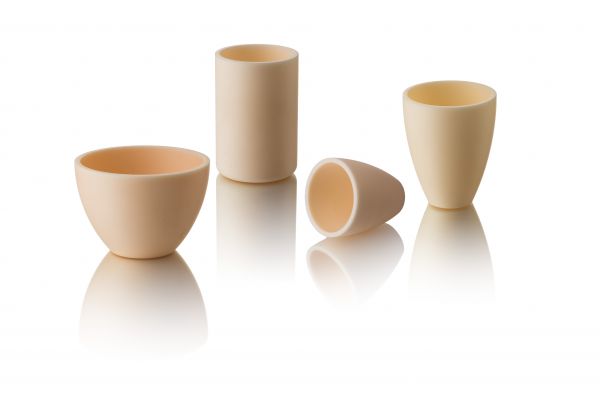
Pure alumina pods are also available in standrad. Their length can reach 150 mm, their width evolves between 10 mm and 30 mm, its depth between 5 mm and 15 mm. The wall thickness of the pods is generally 2-3 mm.
Finally, the combustion boxes can be up to 200 mm long. The thickness of the walls is generally 3-4mm but it can reach the cm in some cases. They are used in particular in the glass industry.
These numerous types of products as well as the variety in their sizes, make it possible to adapt to different fields of application.
See the list of crucibles, pods and standard combustion boxes
Application field of ceramic crucibles: the glass industry
Alumina crucibles show their interest in the glass industry in the face of the corrosive and high temperature atmosphere of molten glass. They allow to give the desired shape to glass objects. Good quality crucibles ensure ease and safety of handling in this industry, thanks to the above mentioned properties of alumina. In addition, the good wear resistance of aluminum oxide allows the components to last a long time in spite of very demanding tasks. Ceramic crucibles and combustion boxes are used for the development and manufacture of special glasses. In particular, they are used in industrial furnaces. The high purity of the material and the dense surface of the crucibles enable them to withstand the most aggressive situations in glass casting.
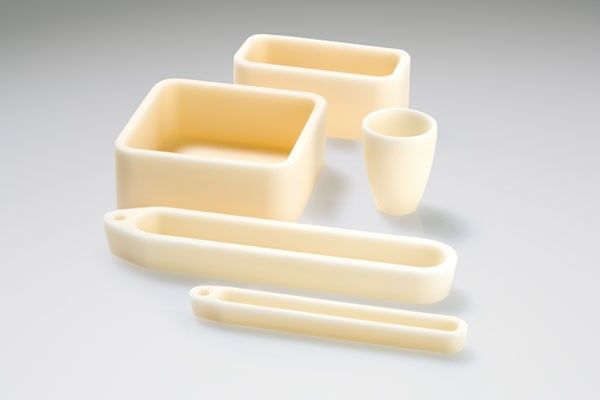
Field of application: ceramic crucibles in metallurgy
Refractory ceramic crucibles made of alumina, zirconia, silicon carbide, silicon nitride or a mixture of compositions are often used in metallurgy for the melting of ferrous, non-ferrous and also precious metals. The good thermal conductivity of ceramics and their resistance to thermal shocks allow efficient and fast induction heating. On the other hand, their resistance to high temperatures, corrosion and wear, as well as their high dimensional stability, even at high temperatures, allow for the reduction of risks when handling the crucibles. Depending on the metals to be melted, we can add anti-wetting agents to extend the life of the crucibles.
Areas of application of the crucibles: R&D, laboratories, CEA & CNRS
In addition to industrial applications, research and development are also areas in which ceramic crucibles are particularly useful. In laboratories, it is often necessary to use small containers in view of the small quantities of products handled. Again, the properties of alumina and ceramic refractories are necessary to obtain reliable results without chemical contamination of the container. The refractoriness of our ceramics allows studies to be conducted at very high temperatures. Their high resistance to corrosion and wear ensures a large number of possible tests. Finally, the high-performance ceramic container will not react with the product contained, which is an important point in R&D: the composition of the crucible will not influence the results and will thus allow more precise research.





